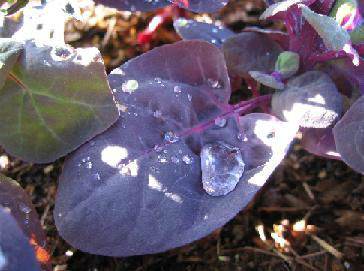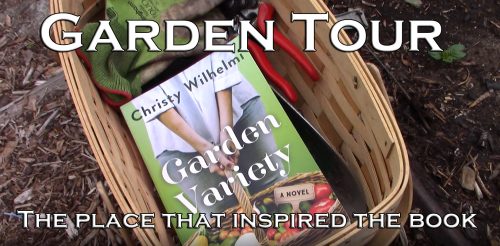Celery is an umbel, a member of the Umbellifera family, which has flowers that are shaped like umbrellas. Umbels are famous for attracting parasitic wasps and other beneficial insects that combat aphids in the garden.
Last fall, we tested out some Tall Utah Celery
seed from Hometown Seeds in the garden, and found that it did really
well. We harvested individual stalks all season long and then let the
rest go to seed to attract beneficial insects and provide habitat. Boy
did it! It is now 6 feet tall and full of seed pods.
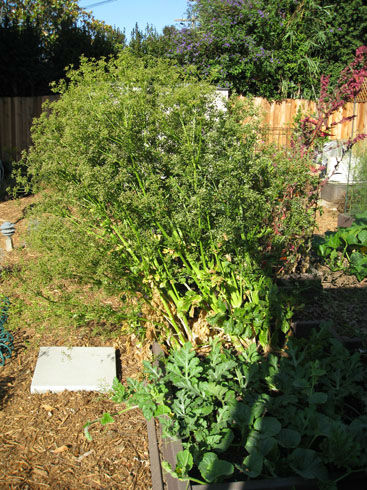
Celery plant gone to seed
Since we’re going to be donating some of this seed to SLOLA – the Seed Library of Los Angeles, It’s important to wait until the seed is fully mature before harvesting. That can be tricky with celery, since it matures at different times overall.
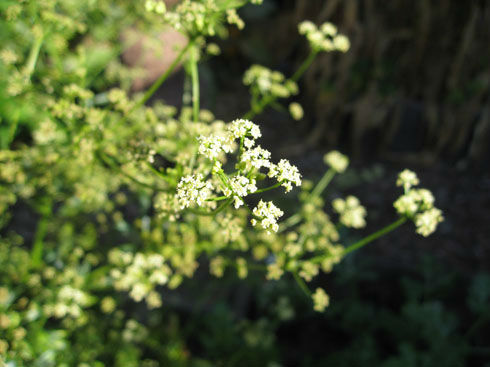
Celery flower
Some of the flowers are just opened, while others have already set seed.
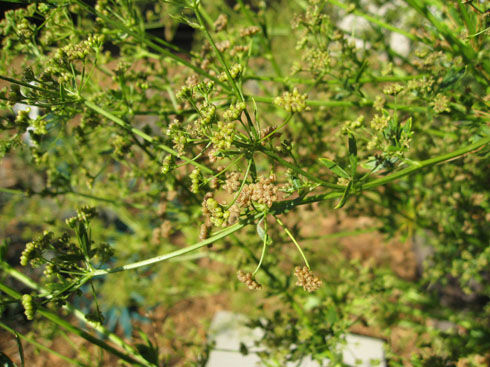
Notice two degrees of maturity. The top middle flower has green seeds forming.
The bottom middle flower has seeds that are drying and turning brown.
Those seeds aren’t quite ready yet, but these are…
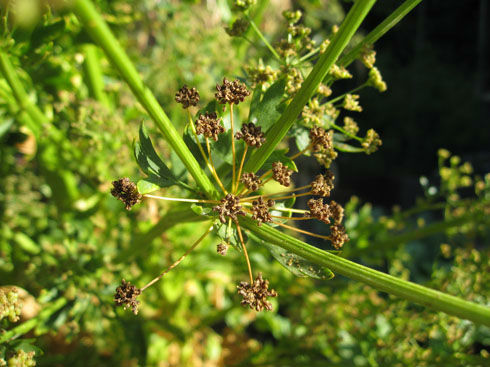
Dark brown seeds look ready to harvest. These are found growing lower on the plant.
Ordinarily we would leave the plant until all of the flowers have matured into dry brown seed heads, covering the stalks with paper bags or pantyhose, but given the size of this celery plant, that seems unreasonable. Either way, we’re very likely to have 1,000 celery sprouts growing in the pathway this fall, but we can curtail that by individually harvesting the brown pods that we see now.
How to harvest: The home gardener can take a cup and hold it under the mature seed head, rubbing the seeds off the plant with a thumb and forefinger into the cup. There is very little chaff from this harvesting process, so there’s no need to winnow.
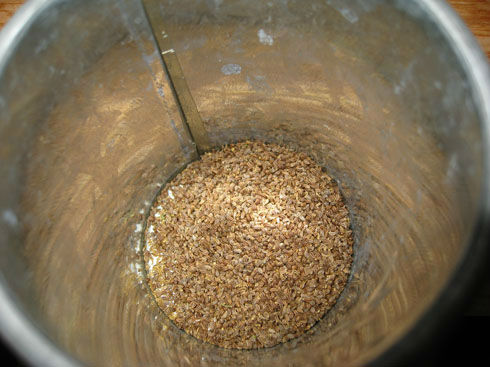
Tiny celery seeds at the bottom of a small cup.
As the plant dries up entirely, we will cut large stalks off and shake them into a paper bag or large tub to collect the remaining seed. We left the seed out overnight indoors to allow the small critters (mainly tiny spiders) to relocate. If there were threat of weevils in the seed, I like to freeze the seed for a few days before storing in the refrigerator. That is most likely not necessary with celery seed.
Bonus Beneficial: While photographing the seed heads, I didn’t notice until I looked at the pictures that the celery seed has become habitat for another species – the lacewing. There are tiny white eggs on translucent stems sitting atop the flower heads.
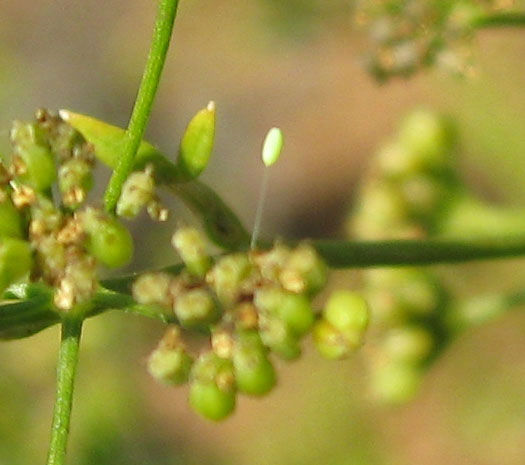
Close up of a lacewing egg on a celery seed head
This is all the more reason to let the seeds mature in place. The lacewing and its young devour aphids all over the garden! Best to let nature take its course here while we harvest seed heads individually.

